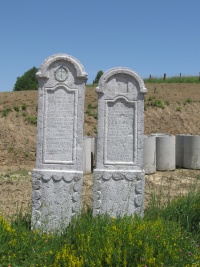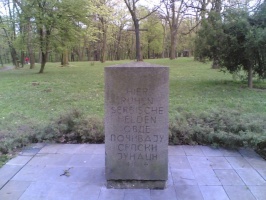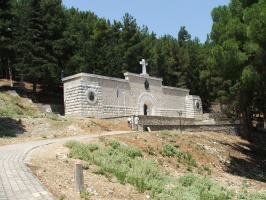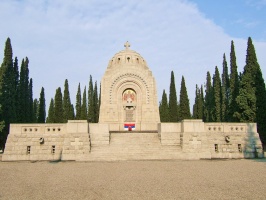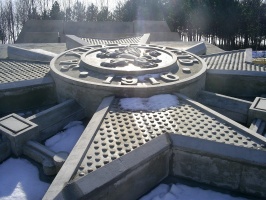Introduction↑
The recent rise in scholarly attention to commemoration in historiographies of South Eastern Europe makes it possible to construct a comparative outline of commemorative processes in the Balkans.[1] This article analyzes the most prominent cases of commemorative activities in Yugoslavia, Romania, Bulgaria and Greece. Among the numerous commemorative acts and practices, primary attention is devoted to sites that presented the most visible commemorative forms such as the projects dedicated to the Unknown Soldier and the eliding of preexisting Orthodox holidays with wartime remembrance days.
The examples explored in this article show that commemoration served several functions. Balkan political elites interpreted the casualties within a nationalist framework, presenting the dead as “national martyrs” who had fallen while achieving the final stage of “national unification.” Furthermore, commemorations were seen as a tool for shaping the perception of the war and reinforcing national identity and unity. However, it is questionable how effective state policies were at framing the significance of the war and soldier deaths in the predominantly traditional agrarian communities of the Balkans. The commemoration of deceased soldiers, often peasants, retained its core purpose as a means to process grief in the private sphere.
The Challenges of Commemoration in Yugoslavia↑
The global conflict allowed for the creation of the Kingdom of Yugoslavia in 1929, unifying the Kingdom of Serbs, Croats and Slovenes. The entire Yugoslav region lost some 1.9 million men with roughly 900,000 military fatalities.[2] In particular, Serbia’s well-respected performance proved costly in terms of military and civilian deaths. There are various available figures but it is commonly estimated that Serbia suffered the most striking mortality rates compared with all belligerents.[3] It was logical that these fatalities were commemorated after the war. However, mourning and remembering the Serbian dead implied regular evocation of the Serbian national past. Consequently, the process presented an obstacle to fully embracing the new Yugoslav identity.
From the onset of the war, Serbian soldiers were buried near the locations where they fell or their bodies were carried to the nearest villages to be placed in church graveyards. Due to the pace of warfare, soldiers were inhumed only in hastily dug graves and honored with a basic memorial service. Circumstances deteriorated as the typhus epidemic swept through the country in late 1914. The following peaceful period at the front which lasted for most of 1915 allowed for more time and organization in administering to casualties and burying human remains. At this time, a resolute action of the Serbian reserve forces was commemorated in one of Belgrade’s parks with a sculpture of an elderly Serbian soldier. This monument was shipped to Vienna as a war trophy after the fierce battle for Belgrade in October 1915. It was erroneously interpreted by Austro-Hungarian officers as a representation of King Peter I Karadjordjević (1844-1921) and was returned after the war.[4]
During the same period, battles in and around the Serbian capital led to the creation of several improvised cemeteries where dead soldiers from both sides were interred. At the German military cemetery in Belgrade, created after the battle, a memorial was built under the orders of field marshal August von Mackensen (1849-1945) which consisted of a headstone above a mass grave for Serbian soldiers. The inscription on the memorial reads, “Here lie Serbian heroes” (“Hier ruhen serbische Helden”) and stands today near the large memorial dedicated to the 208th German Reserved Infantry Regiment.[5]
As the war continued in 1915, the Serbian army, the King, his cabinet and a large number of civilians retreated through the mountainous regions of Albania and Montenegro. How many men lost their lives during this maneuver is unknown. The episode was henceforth known in Serbia as the “Albanian Golgotha,” an indication of how strongly it impacted contemporary Serbians. After the war, a special commemorative certificate was issued to all who had participated in the retreat. Nevertheless, due to the contentious treatment of the youngest Serbian soldiers, there was no serious effort to erect a commemorative monument. The 40,000 recruits, who were summoned as Reserve Troops in late October of 1915, met a disastrous fate during the retreat. These men lacked the most basic equipment and supplies which led to staggering losses due to starvation and cold. The Serbian army resumed battle at the Macedonian front in 1916 after a period of recovery on the Greek island of Corfu. Here, the dead soldiers were inhumed at regimental cemeteries which were orderly maintained and decorated. Some Serbian soldiers and civilians were evacuated to France or its African colonies where many convalescents failed to recover and were subsequently buried near local military hospitals.
In occupied Serbia, several thousand prisoners of war and “unreliable” civilians were sent to various prison camps across the Habsburg Empire, Germany and Bulgaria. Some were even sent to Ottoman soil to construct an urgently needed railway system. At all of these locations large cemeteries were set up as disease and exhaustion took their toll.[6] The ruthless crushing of the Toplica uprising in Serbia (1917) further multiplied the number of civilian deaths and the need for mass graves. The official Serbian war narrative presented the fallen as “defenders of the country.” The war dead among the South Slavs in Austrian uniform were also officially interpreted as victims and their participation in the war was characterized as forced and unwilling.[7] In reality, many of these regiments fought with exemplary tenacity and discipline for the Austro-Hungarian cause. This was a well-known fact among the veterans of the former Serbian army which threatened to provoke disputes in the young Yugoslav state when wartime memories were discussed.
From 1919 onwards, the state felt compelled to commemorate numerous wartime events. Nevertheless, state initiatives were forthcoming only after the first steps were taken by private parties. All Serbian villages were quickly marked by some form of commemorative reference to the 1912-1918 period (including the First and Second Balkan War), which the press framed as the “instinctive manifestations of the deep consciousness of the importance of the Great War.”[8] The presence of the state became more tangible as time passed. A law dedicated to the maintenance of war cemeteries from the three recent conflicts (“Zakon o uređenju vojničkih grobalja i grobova u Otadžbini i strani [Law Dedicated to the Arrangement of the Soldier’s Cemeteries and Tombs in the Country and Abroad]”) was passed in 1922 and the Ministry of Religious Affairs was responsible for its implementation. The law implied that all provisional military cemeteries should be replaced by ossuaries which were seen as a more permanent solution for the preservation of burial remains. The deadline for the finalization of all projects was unrealistically set for 1928. Another act was put in place to catalyze these efforts. It offered all communities, which desired to construct a new religious edifice, substantial financial aid if they decided to include an ossuary.[9] These new state-directed plans were also integrated into existing pre-war commemorative events. For example, the religious holiday of St. Vitus Day, which falls on 28 June, was previously identified with the 1389 Battle of Kosovo. This day was gradually transformed into a national commemorative day dedicated universally to the war dead, but focused on 1389 and the 1912-1918 period in practice.
An important step in the centralization of commemorative efforts was the foundation of the Society of Reserved Officers and Warriors (Udruženje Rezervnih oficira i ratnika) in 1919. The society was composed of Serbian veterans and the Croats and Slovenes who deserted from Habsburg units. However, membership was also open to the new generation of Yugoslav reserved officers. This regular influx of men, who had no connections with the old Serbian army, strengthened the organisation’s Yugoslav character.
This group was responsible for a variety of monuments including one near the Cer Mountain (erected in 1928) and the memorial to the “Defenders of Belgrade” (1931). Many monuments housed the remains of soldiers belonging to different ethnic groups and celebrated the origins of the interred with imagery that recognized diverse religious affiliations. The most exceptional monument was erected in the town of Čačak by the Auxiliary Female Branch of the Fédération Interalliée des Anciens Combattants (FIDAC) in 1934. This collaboration with the internationally respected FIDAC was highly appreciated by Serbian veterans. The Orthodox and Catholic crosses, Star of David and the Islamic half-moon placed at the top of the monument emphasized the plurality of the soldiers’ religious affiliations. The remains of 918 soldiers were buried in this “memorial of Four Faiths;” 262 of these soldiers had fought for the Central Powers.[10] Similarly, the bones of former bitter enemies from the Drina Battle (1914) were inhumed together. Various Croatian home guard and other territorial units fought within the Austro-Hungarian army in this battle. The remains of soldiers who fought in the 53th Croatian regiment, also known as the Trenck’s Pandurs (Trenck’s Militia), were transferred from an improvised cemetery to the newly built ossuary at the mountain Gučevo in 1928.[11]
Serbia and Montenegro had a similar wartime history in the Great War. As a result, the monuments constructed in Montenegro were similar to those in Serbia in terms of general wartime narrative and iconography. They also experienced similar difficulties with monument construction. The tragic episode of the Montenegrins who volunteered for the war in the USA but perished after their boat hit a sea mine just near the Albanian coast in 1916, was commemorated by a statue in the town of Cetinje (1939). However, the improvised cemeteries for Montenegrin soldiers who died attacking Shkoder in 1912-1913 were not replaced by more permanent gravesites. Eventually all state efforts came to a halt due to financial difficulties or political tensions with Albania, which in turn provoked anger and frustration from the families of the dead.[12] In January 1916 the Montenegrin army fought with great tenacity in order to maintain its position near the town of Mojkovac. This resistance forced the Serbian army to retreat to the Adriatic coastline. Therefore, the Mojkovac battle was regularly commemorated as one of the Montenegrin army’s most glorious moments.[13]
The creation of the Monument to the Unknown Hero (Споменик Незнаном јунаку) illustrates the inner complexities of Yugoslav commemoration. Constructed between 1934 and 1938, the tomb featured the work of the famous artist Ivan Meštrović (1883-1962). It was not located in central Belgrade but rather on the top of the nearby Avala Mountain. The position of the tomb is often interpreted as an effort to distance the symbol from the national and daily politics of Belgrade, which was viewed as a Serbian stronghold. The fact that the monument was financed by Alexander I, King of Yugoslavia (1888-1934), a symbol of Yugoslavian unity, and not the Yugoslav government, further strengthened the nonsectarian and Yugoslav character of the tomb. This was part of the king’s efforts to act as a higher authority immune to any form of national discord.
The country’s unity was symbolized by eight female statutes dressed in the national costumes of various Yugoslav regions.[14] The bones of the “Unknown Soldier,” however, belonged to a Serbian who was found on the mountain. The dated inscription on the memorial, “1912-1918,” also placed the two Balkan wars within the Yugoslav commemorative discourse as they had been in earlier Serbian commemorations.
Construction of memorials and maintenance of wartime cemeteries, often in distant regions, presented a huge financial, logistical and political problem. For example, the Czechoslovakian government generously helped finance the construction of many Yugoslav ossuaries. In contrast, the Greek government was not always sympathetic to the huge Yugoslav commemorative projects on its soil. Despite this, in the late 1930s two of the most monumental war memorials dedicated to the Serbian army were built in Greece: a mausoleum in Zejtinlik (1936) on the outskirts of Thessalonica and another on the island of Vido (1938) near Corfu where the Serbian army had recuperated after the 1915 retreat. Final decorations on the ossuary were never completed because Corfu became part of the immediate war zone in 1940.[15] While these two large military monuments were erected, the huge Serbian civilian losses were commemorated only sporadically and mainly in the communities close to the old Austro-Serbian and Serbian-Bulgarian border. The emphasis was placed on war crimes against the Serbian civilians, passing over the victims of typhus and food deprivation.
Reinforcing National Unity in Romania↑
Romania suffered huge losses in the First World War but achieved all of its war aims. The country acquired former Austria-Hungary territory, as well as Bessarabia from the Russian Empire. Casualties among the Romanians amounted to 10 percent of the pre-war population which totaled 7 million.[16] Losses during the disastrous first year of the war were increased by the typhus epidemic which erupted in winter 1916/1917 and, as for the Serbians, decimated the army units. Fighting at the defensive positions of Mărăşti and Mărăşeşti in the summer of 1917 significantly raised the number of the dead and disabled soldiers. All told, 335,000 soldiers were dead or missing at the end of the war.[17]
For many Romanians, the war did not end in 1918, but in 1919 or in 1920, as the Romanian army participated in the destruction of the Hungarian Soviet Republic as well as in skirmishes with the Bolsheviks along the Dniester River and Hungarian irregulars in Transylvania. This extended war timeline was reflected in commemorative activities. All Romanian war memorials show 1916, when the Treaty of Bucharest between Romania and the Entente Powers was signed and Romania declared war on the Central Powers, as the war’s start date.[18] Unlike in Serbia or Bulgaria, in Romania commemoration of the Second Balkan war did not take center stage.[19]
Marking the graves of the dead proved difficult because Romania was traversed by relatively mobile and continuous war campaigns. Large portions of Romania were occupied or on the frontlines, hampering any form of honoring the dead during the war. Initial post-war commemorative practices generally aligned with pre-war mourning traditions that existed in the countryside. These were mostly private initiatives with resources provided by local residents and elites without much oversight from the central government.
In 1919 the state’s role in burial and commemoration expanded with the founding of the Society for the Cemeteries of the Heroes (Mormintele eroilor cazuti in razboi). In Romania the term “hero” referred indiscriminately to any veteran of the Great War. In 1920 a law defined the organization’s mission to find the locations of provisional graves and place any remains in the ossuaries or mausoleums that were yet to be built, as was done in Yugoslavia. It was anticipated that former allies and enemies would act similarly and return remains to their country of origin. As the decade progressed, “heroes’ cemeteries” were constructed by the state in most parts of enlarged Romania along the former front lines and battle sites. Notable locations include: Comăneşti, Călăraşi, Bălti, mausoleums at Focşani, Giurgiu, Mărăşti, Mărăşeşti and Topliţa.
The two most monumental architectural commemorative achievements were the Mărăşeşti Mausoleum and the Tomb of the Unknown Soldier in Bucharest. In 1923, soldiers’ remains were exhumed at several locations where fierce fighting took place to be placed in a crypt in Carol Park at the center of Bucharest. Remains were gathered from the four corners of Romania, symbolizing the four corners of the world. A war orphan, who was a pupil at the military school, chose a coffin to house the remains. The process of the selection of the soldier to be buried clearly reflected French influence. In France, the “Unknown Soldier” was randomly selected from eight caskets exhumed from the most important French battle sites of the Great War. A veteran, specially chosen for the occasion, was given the task of choosing the coffin that was ultimately transported back to Paris.[20] The construction of the Mărăşeşti Mausoleum was spearheaded by the National Orthodox Society of Romanian Women (Societatea Ortodoxă Naţională a Femeilor), which was dedicated to the preservation of the war’s memory. Though Mărăşeşti was the site of a famous battle, financial difficulties led to delayed construction and the monument was completed only in 1938.[21]
The state pushed to control commemorative activity but found it difficult to enforce the new rites on a local level where elaborate and precise tradition dictated the treatment of the dead. Abstract concepts like patriotism or self-sacrifice were of secondary importance for most of the families of the Romanian peasant-soldiers.[22] Remembrance days for the dead were usually incorporated into existing Orthodox holidays. This practice was regulated by the government after 1918. One such merger was the introduction of “Heroes’ Day” in 1920 to coincide with the Orthodox Christian holiday of Ascension.[23] Though the expanded Kingdom of Romania was not a nationally homogeneous country and included a substantial Hungarian and German minority, commemorative practices maintained a Romanian character. Romanians hailed 1 December 1918 when Transylvania was incorporated into the Romanian state as the most important national holiday while other European combatants prioritized 11 November as Armistice Day, which caused tensions in the territories acquired during the war.[24]
Commemorating War and Defeat in Bulgaria↑
As did many other Balkan countries, Bulgaria bounded its conflict period with the dates 1912-1918. However, in contrast to Romania or Serbia, Bulgaria was on the losing side in the Second Balkan War as it was in the subsequent World War. This meant that a “crisis of defeat” discourse marked interwar life in Bulgaria.[25] This attitude was reflected in the commemorations dedicated to the memory of the 150,000 Bulgarian soldiers killed during the 1912-1918 fighting period.[26]
The process of commemorating the war dead began while fighting was still ongoing. In the early phases of the war, general opinion was that the memory of the Bulgarian soldiers who were killed in action or had died from wounds or diseases was often not decorously upheld by the army’s High Command. This problem was recognized by some officers and it was perceived as one of the crucial factors causing the decline in morale among the Bulgarian troops. In 1917, the General Staff intervened and a special unit was formed within the army’s sanitary services. Its main task was to mark the locations of gravesites. Soon after, the names of the dead were inscribed on improvised memorials and the sites were decorated with crosses and fenced.[27]
The largest Bulgarian war memorial complex was the military cemetery built in 1916 in the Silistra region to commemorate the Bulgarian victory at the Romanian fortress in Tutrakan in September of that year. The dead from both sides were inhumed at the same location. Here, 1,764 Bulgarian soldiers were placed alongside 6,000 Romanians. A small portion of the buried men belonged to the German and Turkish detachments sent to bolster Bulgarian war efforts. Known as Military Cemetery 1916 (Военна гробница – 1916 г.), the complex was further decorated with an obelisk in 1922 which bears the inscription, “Honor and Glory to those who knew how to die for their Country” (“Чест и слава на тия, които са знаили да мрат геройски за тяхното отечество”) engraved in the four languages spoken by the deceased soldiers. Nevertheless, the area soon came into the possession of Romania and the contested location was returned to Bulgaria only in 1940.
After the war, the process of mourning the dead was as massive as it was spontaneous. Soldier’s statues, commemorative inscriptions and plaques were erected in towns and villages across Bulgaria. As in Romania, pre-war folk mourning traditions played an important role in this process. The names of the dead, often with a short biographical note, were carved in stone and placed on the walls of churches, schools and libraries. The Bulgarian state attempted to assert its control over commemorative practices with the Ministry of War’s formation of the Section for Soldiers’ Graveyards. The Section’s mission was to “control and discipline traditional peasant mourning culture” and to infuse it with elements of romantic and civic nationalism.[28] The Section favored universalized depictions of the Bulgarian nation in its commemorative efforts such as at Veliko Tarnovo’s “Mother Bulgaria” monument where Bulgaria was personified as a woman.
With these goals, the Section aimed to inscribe on monuments the names of the fallen regardless of their ethnic origin as with Plovdiv’s monument to the Armenian soldiers who fought in Bulgarian units. However, at the local level monuments were often built according to area tradition. For example, in Muslim villages, so called “fountain monuments” were built in accordance with Islamic religious culture. One of the most visible examples of the tensions that accompanied Bulgarian commemorations was the construction of the Monument to the Unknown Soldier in the center of Sofia. It took ten years to implement the artist Andrei Nikolov’s (1878-1959) vision and the monument was not officially unveiled during the interwar years. The concept of a tomb for “unknown soldiers” was seen by many Bulgarians as directly opposed to the “individualized death” which was at the core of traditional commemorative practices.[29]
As in Romania, Bulgarian remembrance days were integrated into existing Orthodox holidays. The foremost example of this trend was the celebration of St. Archangel Michael Day or Archangel All Souls’ Day to commemorate the memory of fallen Bulgarian soldiers. After 1924, the state adopted the holiday and organized a yearly solemn mass at the Military Cemetery in Sofia.
A Divided Greek Nation Fighting the Great War↑
The ambiguities of Greece’s participation in the First World War also marked its post-war commemorations. In Greece, 11 November had no official symbolic significance nor was the expression “the Great War” in use. However, the state was in an almost constant state of war between 1912 and 1922. Greece only entered the war after fierce internal debate and political division, known as the “National Schism” (Εθνικός Διχασμός). Eventually, Greece sent a small portion of its troops to the Macedonian front in 1917 at the initiative of Eleutherios Venizelos (1864−1936).[30] Political ambivalence regarding entry into the war combined with Greece’s subsequent massive military involvement in Asia Minor in the early 1920s led to commemorative efforts that paid minimal attention to the 1914-1918 period.
The only clearly visible sign of state-led commemorations dedicated to 1914-1918 was the Monument to the Unknown Soldier in Athens. This monument was unveiled on 25 March 1932, the date officially celebrated as the beginning of the Greek War for Independence (1821). Both in imagery and inscription, the artist Emmanuel Lazaridis (1894−1961) linked the First World War with the more recent independence wars and with Greece’s classical past. A dying hoplite figured prominently as part of the monument’s decoration and a quotation from Thucydides’ (c.460-c.395 BC) rendering of Pericles’ (c.490-c.429 BC) funerary oration at the start of the Peloponnesian war was used as the ceremonial inscription. Its purpose and role in contemporary Greek society remains a topic of debate.[31]
Conclusion↑
Each country in South East Europe suffered huge losses in the First World War. The only exception was Greece whose political elite remained polarized and prevented direct entry into the war for some time. In all of the Balkan countries, however, the state commemorated the fallen primarily as martyrs for the accomplishment of the last and the most difficult phase of national liberation and unification projects. The post-war creation of Yugoslavia and the expansion of Romania’s boarders to include Hungarian and German minorities made for complex and often contentious commemorative practices in these states.
In both cases, soldiers who spoke different languages, held different religious beliefs, and even had fought on opposing sides of the war were buried together in state-built ossuaries and monuments dedicated to the Unknown Soldier. The most elaborate commemorations in South Eastern Europe were performed in accordance with the practices of Western European states, particularly those of France and Great Britain. One of these imported practices was the cult of the Unknown Soldier. Nevertheless, in rural areas, more traditional forms of bereavement and commemoration coexisted. Religion played an important role in both traditional and nationalist commemorative processes. In the villages, priests were an integral part of traditional commemorative culture focused on mourning, but in urban areas, where state-guided commemorations were more palpable, religion played an important role in the nation-building process. All of the Balkan countries neglected the noncombatant victims and almost completely omitted them from the commemorative narrative. Only the places where the most egregious crimes against the civilians had occurred were properly marked.
The public in all of the Balkan countries commented on the poor outcome of commemorative activities as many gravesites remained unmarked and forgotten. Construction projects already underway took too long to be finalized due to numerous logistical and political problems. Finally, work at many memorial sites was completely thwarted with the outbreak of the Second World War when many of the war memorials and cemeteries mentioned in this article were destroyed.
Danilo Šarenac, Institute for Contemporary History, Belgrade
Section Editors: Tamara Scheer; Richard C. Hall; Milan Ristović
Notes
- ↑ Thanks to the work of Maria Bucur regarding Romanian case studies, Snezhana Dimitrova in Bulgaria and Olga Manojlović Pintar and Aleksandar Ignjatović in Serbia, many topics related to connections between the First World War, architecture, war memorials and ideology have been opened for discussion. The approach taken by these authors can be framed within the theoretical concepts introduced and used by the authors such as Pierre Nora, George Mosse (1918-1999), Jay Winter and Antoine Prost.
- ↑ Pavlović, Stevan K.: Istorija Balkana 1804−1945 [History of the Balkans 1804˗1945], Belgrade 2004, p. 377.
- ↑ Mitrović, Andrej: Serbia’s Great War, 1914−1918, London 2007.
- ↑ Spomenik trećepozivcima [The Monument to the Third-Call Men], in: Ratnički glasnik [Warrior's Voice], volume II (1923), p. 270.
- ↑ Popadić, Milutin: Po zgarištu jednog demonskog požara posle 15 godina [At the Ashes of the Demonic Fire 15 Years Later], in: Agonija Beograda u svetskom ratu [The Agony of Belgrade in the Great War], Belgrade 1931, p. 517.
- ↑ Archive of Serbia, Military Cemeteries, (RG), unclassified materials; G. Ninčić odgovara [Mr. Ninčić Replies], Politika, 24. June 1922, p. 2.
- ↑ Zapisnik sednice od 22. novembra 1929 [Transcripts of the Meeting Held on 22 November 1929], in: Ratnički glasnik [Warrior's Voice], volume I, (1930), p. 37.
- ↑ Vidovdan [St. Vitus Day], in: Politika, 28. June 1922, p. 1.
- ↑ Zakon o uređenju vojničkih grobalja i grobova u Otadžbini i na strani [Law Dedicated to the Regulation and Maintenance of the Military cemeteries and Graves in Country and Abroad], Belgrade 1922.
- ↑ Trifunović, Bogdan: Život pod okupacijom. Čačanski okrug 1915−1918 [Life Under Occupation. Čačak District 1915-1918], Čačak 2010, p. 68.
- ↑ Zapisnik sednice od 22. novembra 1929 [Transcripts of the Meeting Held on 22 November 1929], in: Ratnički glasnik [Warrior's Voice], Volume I (1930), p. 37.
- ↑ Archive of Serbia, Military Cemeteries, (RG).
- ↑ In January 1916, the Montenegrins repelled several Austro-Hungarian attacks near the village of Mojkovac enabling the retreat of the Serbian army.
- ↑ Ignjatović, Aleksandar: Jugoslovenstvo u arhitekturi [The Yugoslav Ideology and Architecture], Belgrade 2007, p. 213.
- ↑ Archive of Serbia, Fond: Military Cemeteries, (RG), unclassified materials.
- ↑ Turcanu, Florin: Les ambiguïtés d’une sortie de guerre [The Contradictions of One Ending of the War], in: Audoin-Rouzeau, Stéphane / Prochasson, Christophe (eds.): Sortir de la Grande Guerre, Le monde et l’après-1918 [Ending the Great War. The World and Post-1918], Paris 2008, p. 240.
- ↑ Ibid., p. 255.
- ↑ Ibid., p. 237.
- ↑ Bucur, Maria: Heroes and Victims. Remembering War in Twentieth Century Romania, Bloomington/Indianapolis 2010, p. 31.
- ↑ Jagielski, Jean-François: Le Soldat Inconnu [The Unknown Soldier], Paris 2005, p. 7.
- ↑ Bucur, Maria: Heroes and Victims. Remembering War in Twentieth Century Romania, Bloomington/Indianapolis 2010, p. 126.
- ↑ Bucur, Maria: Of Crosses, Winged Victories, and Eagles. Commemorative Contests between Official and Vernacular Voices in Interwar Romania, in: East Central Europe 37 (2010), p. 55.
- ↑ Ibid, p. 61.
- ↑ Ibid, p. 21.
- ↑ Dimitrova, Snezhana: ‘Taming the death.’ The culture of death (1915-18) and its remembering and commemorating through First World War soldier monuments in Bulgaria (1917-44), in: Social History 30/2 (2005), p. 187.
- ↑ Ivanov, Martin/Radev, Svetlin: Predstavyane na novata digitalna kolektsiya. Zaginali voennosluzheshti v Balkanskite voyni (1912-1913) [The Presentation of the New Digital Collection. Soldiers Killed in the Balkan Wars]. Za proekta [About the Project]. Issued by archives.bg, online: http://www.archives.bg/balkanwars (retrieved: 21 March 2013). Tucker, Spencer C. (ed.): The Encyclopedia of World War I. A Political, Social and Military History, Santa Barbara 2005, p. 273.
- ↑ Dimitrova, Snezhana: ‘My War is not Your War.’ The Bulgarian Debate on the Great War, ‘The experienced war’ and Bulgarian modernization in the inter-war years, in: Rethinking History 6/1 (2002), p. 24.
- ↑ Ibid, p. 24.
- ↑ Peev, Gueorgui, Le monument du soldat inconnu Bulgare [The Monument to the Unknown Bulgarian Soldier], in: Cochet, François / Grandhomme, Jean-Noël (eds.): Les soldats inconnus de la Grande Guerre. La mort, le deuil, la mémoire [Unknown Soldiers of the Great War. Death, Sorrow, Memory], Paris 2012, pp. 261-264.
- ↑ Kostis, Kostas: Le paix introuvable: le cas grec [Elusive Peace: the Greek Case], in: Audoin-Rouzeau, Stéphane/Prochasson, Christophe (eds.): Sortir de la Grande Guerre. Le monde et l’après-1918 [Ending the Great War. The World and Post-1918], Paris 2008, p. 349.
- ↑ Lemonidou, Elli: Le soldat inconnu grec [The Greek Unknown Soldier], in: Cochet, François/Grandhomme, Jean-Noël (eds.): Les soldats inconnus de la Grande Guerre. La mort, le deuil, la mémoire [Unknown Soldiers of the Great War. Death, Sorrow, Memory], Paris 2012, p. 155.
Selected Bibliography
- Bucur-Deckard, Maria: Heroes and victims. Remembering war in twentieth-century Romania, Bloomington 2010: Indiana University Press.
- Cochet, François / Grandhomme, Jean-Noël: Les soldats inconnus de la Grande Guerre. La mort, le deuil, la mémoire, Saint-Cloud 2012: Soteca.
- Mitrović, Andrej: Serbia's Great War, 1914-1918, West Lafayette 2007: Purdue University Press.





